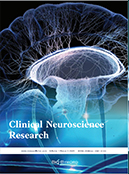Effects of Repetitive Magnetic Stimulation of the Vagus Nerve Combined with Intermittent Tube Feeding on Patients with Dysphagia Due to Cerebral Infarction
Abstract
Objective: To study the effect of repetitive magnetic stimulation of the vagus nerve combined with intermittent tube feeding on the swallowing function and the incidence of aspiration pneumonia in patients with dysphagia due to cerebral infarction. Methods: This article recruited 60 patients after cerebral infarction as research subjects. The patients were divided into an observation group and a control group using the random number method. The control group received conventional rehabilitation treatment, and the observation group received repetitive vagus nerve magnetic stimulation combined with intermittent tube feeding on top of conventional treatment. The Gugging Swallowing Screen (GUSS) score, Rosenbek Penetration/Aspiration Scale (PAS) score, and Functional Oral Intake Scale (FOIS) score were measured before and after the test, and the occurrence of pneumonia in patients after treatment was recorded. Results: After treatment, the GUSS, PAS, and FOIS scores of the patients in the control group improved (P < 0.05), and the swallowing function improved; the incidence of aspiration pneumonia was 3.03%, which was lower than that in the control group (P < 0.05).Conclusion: Vagus nerve repetitive magnetic stimulation combined with intermittent tube feeding can well improve the swallowing function of patients after cerebral infarction.
References
Brogan E, Langdon C, Brookes K, et al., 2014, Respiratory Infections in Acute Stroke: Nasogastric Tubes and Immobility are Stronger Predictors than Dysphagia. Dysphagia, 29(3): 340–345.
Kim DY, Park HS, Park SW, et al., 2020, The Impact of Dysphagia on Quality of Life in Stroke Patients. Medicine, 99(34): e21795.
Wang J, Tang L, Dong W, et al., 2022, Study on the Impact of Ultra-Low Frequency Repetitive Transcranial Magnetic Stimulation Therapy on NIHSS Score, ADL Score, NSE Level, and Kubota Drinking Test in Patients with Acute Cerebral Infarction and Dysphagia. Life Science Instruments, 20(z1): 68.
Ho CH, Lin WC, Hsu YF, et al., 2018, One-Year Risk of Pneumonia and Mortality in Patients with Poststroke Dysphagia: A Nationwide Population-Based Study. Journal of Stroke and Cerebrovascular Diseases, 27(5): 1311–1317.
Feng MC, Lin YC, Chang YH, et al., 2019, The Mortality and the Risk of Aspiration Pneumonia Related with Dysphagia in Stroke Patients. Journal of Stroke and Cerebrovascular Diseases, 28(5): 1381–1387.
Wheless JW, Gienapp AJ, Ryvlin P, 2018, Vagus Nerve Stimulation (VNS) Therapy Update. Epilepsy & Behavior, 88(1): 2–10.
George MS, Sackeim HA, Rush AJ, et al., 2000, Vagus Nerve Stimulation: A New Tool for Brain Research and Therapy. Biol Psychiatry, 47(4): 287–295.
Dawson J, Pierce D, Dixit A, et al., 2016, Safety, Feasibility, and Efficacy of Vagus Nerve Stimulation Paired with Upper-Limb Rehabilitation After Ischemic Stroke. Stroke, 47(1): 143–150.
Kimberley TJ, Pierce D, Prudente CN, et al., 2018, Vagus Nerve Stimulation Paired with Upper Limb Rehabilitation After Chronic Stroke. Stroke, 49(11): 2789–2792.
Dawson J, Engineer ND, Prudente CN, et al., 2020, Vagus Nerve Stimulation Paired with Upper-Limb Rehabilitation After Stroke: One-Year Follow-up. Neurorehabilitation and Neural Repair, 34(7): 609–615.
Lin W, Chou C, Chang M, et al., 2018, Vagus Nerve Magnetic Modulation Facilitates Dysphagia Recovery in Patients with Stroke Involving the Brainstem – A Proof of Concept Study. Brain Stimulation, 11(2): 264–270.
Zhang T, Zhao J, 2017, Guidelines for Early Rehabilitation Treatment of Stroke in China. Chinese Journal ofNeurology, 50(06): 405–412.
Trevizol A, Barros MD, Liquidato B, et al., 2015, Vagus Nerve Stimulation in Neuropsychiatry: Targeting Anatomy-Based Stimulation Sites. Epilepsy Behav, 51: 18.
Dawson J, Pierce D, Dixit A, et al., 2016, Safety, Feasibility, and Efficacy of Vagus Nerve Stimulation Paired with Upper-Limb Rehabilitation After Ischemic Stroke. Stroke, 47(1): 143–150.
Wan G, Zhang Y, Shi J, et al., 2019, Study on the Sensitivity and Specificity of Modified Volumetric Viscosity Test in the Assessment of Dysphagia. Chinese Journal of Physical Medicine and Rehabilitation, 41(12): 900–904.

